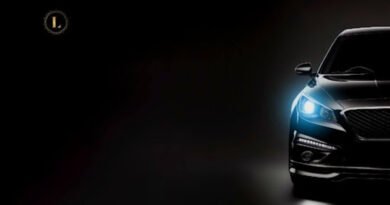How to Choose the Right Motorcycle Helmet for Your Travel Style
Riding a motorcycle can be an incredibly liberating experience, giving you the freedom to explore the open road and discover new destinations. But, as any experienced rider knows, safety is a critical aspect of motorcycle travel. One of the most important pieces of equipment for any rider is the helmet, which can provide essential protection in case of an accident. But, with so many options available, how do you choose a helmet that fits your head, style, and budget? This article will show you how to find the perfect helmet for your travel adventure. Let’s get started!

Source: https://www.pexels.com/photo/male-biker-sitting-on-motorcycle-with-smartphone-5166367/
Photographer: Sangeet Rao
https://www.pexels.com/@sangeet007/
Table of Contents
How Your Travel Style Influences Your Helmet Choice
Before buying motorcycle helmets, you must consider your travel style. What kind of motorcycle do you ride? Where do you go? How long do you stay? How often do you stop? These questions will help you determine the best helmet for your needs.
There are many types of motorcycle travel styles, but here are some common ones:
Touring
You ride long distances on highways or scenic routes. You need a helmet that is comfortable, quiet, and has good ventilation and visibility. A full-face or modular helmet is a good option for touring.
Adventure
You ride on different terrains and climates. You need a versatile, durable helmet with good protection and features. An adventure or dual-sport helmet is a good option for adventure riding.
Urban
You ride in cities or towns. You need a lightweight, stylish helmet with good visibility and communication. An open-face or half-helmet is a good option for urban riding.
Off-road
You ride on dirt roads or trails. You need a rugged, breathable helmet with good protection and visibility. An off-road or motocross helmet is a good option for off-road riding.
Of course, you can mix and match different travel styles and helmets depending on your preferences and destinations. But knowing your travel style will help you narrow your choices and find the right helmet for your adventure.
Know the Different Types of Motorcycle Helmets
Another factor to consider when choosing a helmet is the type or style. There are many types of motorcycle helmets, but here are some of the most common ones:
Full-face helmet
This is the most protective type of helmet. It covers your entire head and face and has a visor that shields your eyes. It offers excellent protection from impact, wind, noise, and weather. It is ideal for touring, adventure, and off-road riding. However, it can also be heavy, hot, and restrictive.
Open-face helmet
This is a less protective type of helmet. It covers your head but leaves your face exposed. It has a visor or a peak that protects your eyes. It offers good visibility, ventilation, and communication. It is ideal for urban and casual riding. However, it can also be noisy, less secure, and vulnerable to debris and weather.
Modular helmet
This is a hybrid type of helmet. It combines the features of a full-face and an open-face helmet. It has a chin bar can be flipped up or down, allowing you to switch between modes. It offers versatility, convenience, and comfort. It is ideal for touring and adventure riding. However, it can also be heavy, noisy, and less durable.
Half helmet
This is the least protective type of helmet. It covers only the top of your head and has no visor or chin bar. It offers minimal protection from impact, wind, noise, and weather. It is ideal for short and low-speed rides. However, it can also be unsafe, uncomfortable, and illegal in some places.
These are some of the main types of motorcycle helmets that you can choose from. Each type has its own advantages and disadvantages, so you need to weigh them carefully and decide what suits you best.
Understand Helmet Safety Standards and Ratings
Besides the type and style of the helmet, you also need to consider its safety standards and ratings. These are indicators of how well the helmet can protect you from impact and injury in case of a crash.
Different organizations test and rate helmets using different methods and criteria. Here are some of the most common ones:
DOT (Department of Transportation) safety standard
This is a mandatory standard for all helmets sold in the USA. It tests the helmet’s impact absorption, penetration resistance, retention system, and field of vision. Helmets that meet this standard have a DOT sticker on the back.
ECE (Economic Commission for Europe) safety standard
This is a widely accepted standard for helmets sold in Europe and many other countries. It tests the helmet’s impact absorption, penetration resistance, retention system, chin strap, and field of vision. Helmets that meet this standard have an ECE label on the back.
SNELL (Snell Memorial Foundation) safety standard
This is a voluntary standard for helmets sold in the USA and other countries. It tests the helmet’s impact absorption, penetration resistance, retention system, chin strap, and field of vision. It is considered more rigorous than DOT and ECE standards. Helmets that meet this standard have a SNELL sticker on the back.
SHARP (Safety Helmet Assessment and Rating Programme) safety rating
This is a rating system developed by the UK government. It tests the helmet’s impact absorption at different speeds and angles. It assigns a star rating from one to five based on the helmet’s performance. Helmets that meet this rating have a SHARP label on the back.
Conclusion
In the end, choosing the right motorcycle helmet for your travel style comes down to safety, comfort, and personal preference. Your helmet is your most important gear, so take the time to find one that fits you perfectly and reflects your unique style. Ride safe, and enjoy the journey!




